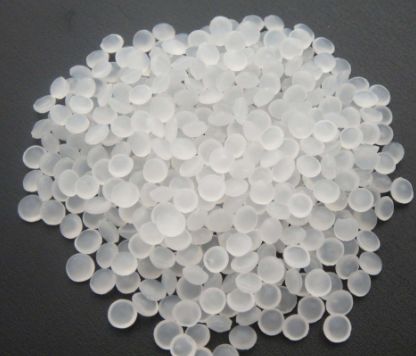Four Major Factors Affecting the Shrinkage Rate of Modified PP Plastics
The control of the shrinkage rate of PP plastic is an important aspect of PP modification. Proper control of the shrinkage rate is significant for the promotion and application of modified polypropylene materials. This is especially important when modified polypropylene is used to replace traditional engineering plastics, where shrinkage rate becomes a critical factor. During the modification process, what are the factors that affect the shrinkage rate of PP plastic?
1. Mineral Filling
The main mineral additives used for modifying PP plastics are calcium carbonate, talc, and mica powder, which have a significant impact on the molding shrinkage rate of PP plastics.
The main aspects are reflected in three areas: firstly, the mineral filler itself does not shrink, and its addition reduces the overall shrinkage rate of the modified polypropylene material; secondly, the addition of the mineral filler inevitably affects the crystallinity of the polypropylene, thereby influencing the shrinkage rate; thirdly, the addition of fine mineral agents acts as a nucleating agent, altering the structural state of the polypropylene, enlarging the formation of spherulites, and also affecting the molding shrinkage rate of the polypropylene.

2. Fiberglass Reinforcement
Glass fiber reinforcement is an important method for modifying PP plastic, and glass fiber has the greatest impact on the molding shrinkage rate of modified PP materials. When the glass fiber content reaches 30% or more, the molding shrinkage rate of PP plastic decreases from 1.8 to 0.5. Additionally, surface-treated glass fibers have a greater impact on the molding shrinkage rate than untreated glass fibers.
The addition of glass fibers disrupts the crystallinity of PP, affecting the shrinkage rate, while the glass fibers restrict the crystallization shrinkage of PP plastic.
3. Addition of Polyethylene
Polyethylene is also a highly crystalline plastic with a large molding shrinkage. However, when it is added to polypropylene, the crystallinity of both materials is to some extent disrupted, resulting in a decrease in the overall molding shrinkage.
4. Changes in the Melt Index (MI) of PP Plastic Itself
The molding shrinkage of polypropylene is affected by its degree of crystallinity, which in turn is influenced by the molecular weight. When the melt index (MI) increases, the molecular weight decreases, leading to an increased crystallization rate and higher molding shrinkage. Changes in the MI of polypropylene also have a certain impact on the molding shrinkage.
【Copyright and Disclaimer】The above information is collected and organized by PlastMatch. The copyright belongs to the original author. This article is reprinted for the purpose of providing more information, and it does not imply that PlastMatch endorses the views expressed in the article or guarantees its accuracy. If there are any errors in the source attribution or if your legitimate rights have been infringed, please contact us, and we will promptly correct or remove the content. If other media, websites, or individuals use the aforementioned content, they must clearly indicate the original source and origin of the work and assume legal responsibility on their own.
Most Popular
-

List Released! Mexico Announces 50% Tariff On 1,371 China Product Categories
-

Nissan Cuts Production of New Leaf EV in Half Due to Battery Shortage
-

New Breakthrough in Domestic Adiponitrile! Observing the Rise of China's Nylon Industry Chain from Tianchen Qixiang's Production
-

Dow, Wanhua, Huntsman Intensively Raise Prices! Who Controls the Global MDI Prices?
-

Mexico officially imposes tariffs on 1,400 chinese products, with rates up to 50%






